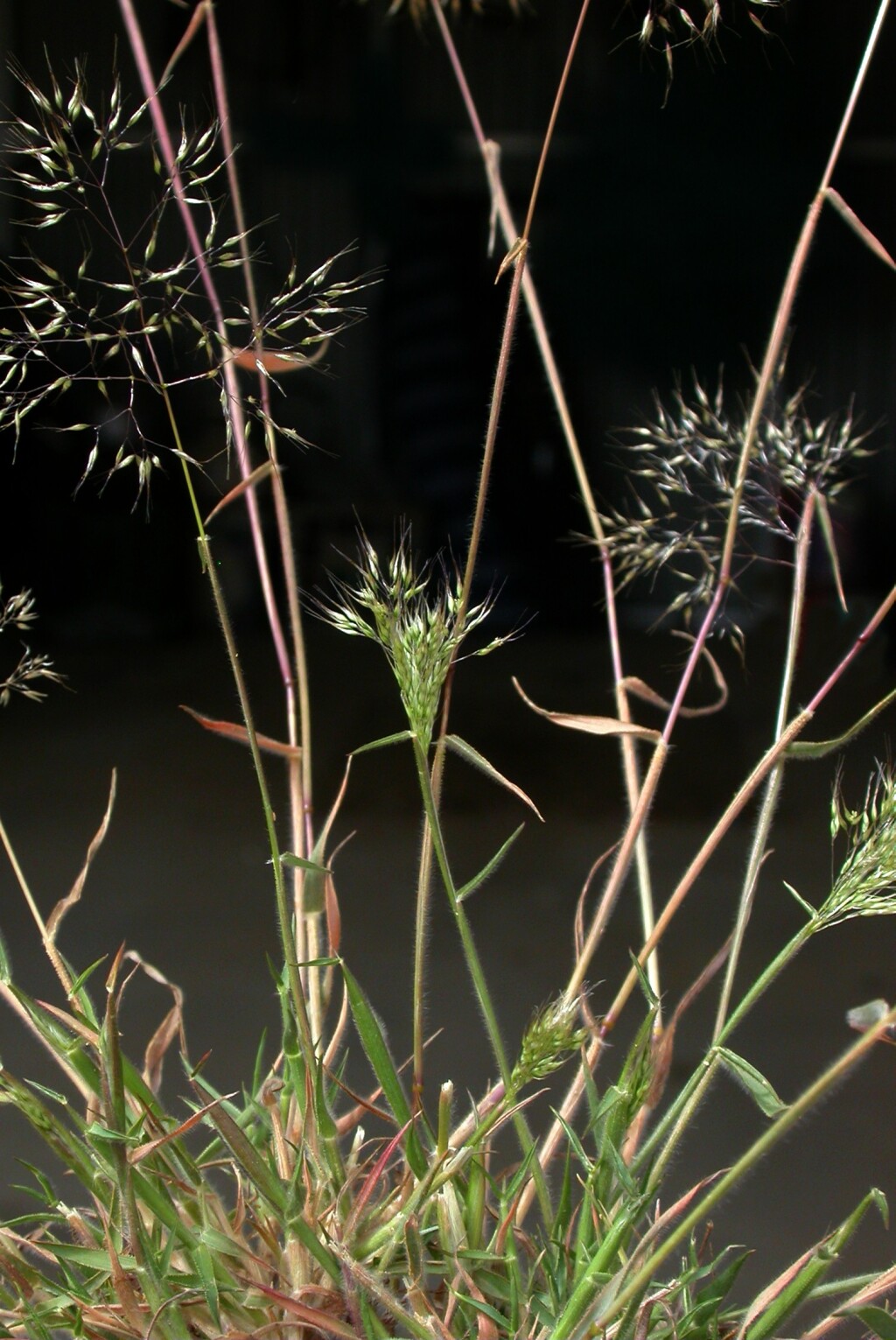Pentameris airoides subsp. airoides
Delicate tufted annual, culms erect, to 20 cm high. Leaves pilose overall and with small, saucer-shaped outgrowths on the margins and major veins; blade flat or somewhat incurved, to 4 cm long and 1.5 mm wide; ligule ciliate, c. 0.5 mm long with tufts of longer hairs at the sides. Inflorescence an ovoid panicle, up to 5 cm long and wide when expanded; panicle branches mostly in threes, bearing indented swellings along the internodes. Spikelets 2-flowered, 3–4 mm long (excluding awns), the florets not exceeding the subequal, gaping, acuminate glumes; lemmas oblong, 2–3 mm long, glabrous except for a few hairs on the callus, central awn shining brown, 5–8 mm long, bent above halfway, lateral awns pale, c. 2 mm long, remaining straight; palea narrowly oblong, about as long as body of lemma; anthers 0.5–1 mm long. Flowers Sep.–Nov.
LoM, MuM, Wim, GleP, VVP, VRiv, MSB, RobP, MuF, GipP, OtP, Gold, CVU, GGr, DunT, NIS, EGL, EGU, HSF. Occurs on sand or dry, skeletal soils, predominantly in the west but with a few eastern disjunctions in rain-shadow areas.
Pentameris airoides is remarkable for its strong superficial resemblance to the widespread genus Aira which is in the tribe Aveneae.
Walsh, N.G. (1994). Poaceae. In: Walsh, N.G.; Entwisle, T.J., Flora of Victoria Vol. 2, Ferns and Allied Plants, Conifers and Monocotyledons, pp. 356–627. Inkata Press, Melbourne.
 Spinning
Spinning

